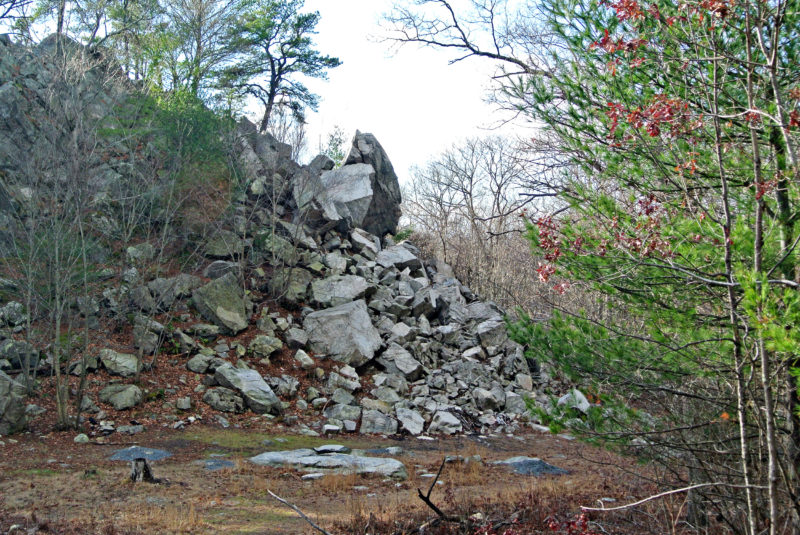Freetown-Fall River State Forest
For a true adventure in the woods, head to Freetown-Fall River State Forest. Part of the Southeastern Massachusetts Bioreserve, this vast swath of state-owned forest is a destination for all types of outdoor recreation. And with its convenient location just north of Fall River and New Bedford, you can find yourself among the tall pines within minutes of home.
Features

Popular Profile Rock is a family-friendly attraction to explore at Freetown-Fall River State Forest.
Freetown-Fall River State Forest makes up the largest public portion of the Southeastern Massachusetts Bioreserve, a 13,600-acre area of protected land that stretches across Fall River and Freetown. If you want to explore the Bioreserve, the state forest is a great place to start.
Many people know Freetown-Fall River State Forest because of popular Profile Rock, a 50-foot outcropping that resembles a profile believed to be Chief Massasoit. The pavilions, picnic tables, and wading pool at the nearby forest headquarters are also a magnet for families in summer.
Go beyond these attractions, and you’ll find a wild world to discover along the state forest’s seemingly endless trails. Set off on a day-long hike or mountain biking adventure through the woods, or venture down the bridle trails on horseback. For snow lovers, Freetown-Fall River State Forest is a play land for skiing, sledding, and snowshoeing. Hunting is allowed in parts of the state forest, so be sure to wear blaze orange during hunting season.
Trails
With 50 miles of trails and unpaved roads, there’s a lot to discover at Freetown-Fall River State Forest. Before you set off, we recommend you grab a map so you can follow the forest’s extensive networks of trails. (Download trail map)
There are two main trail networks through the state forest: one begins at the forest headquarters, while the other is best accessed from the parking areas on Bell Rock Road or Copicut Road. From either of these starting points, you can walk for miles along wide gravel roads and bridle paths, or journey deeper into the forest on a maze of smaller multi-use trails.
To help you navigate, the trails are color coded by allowed use. All of the trails are accessible to hiking and non-motorized biking (marked in blue and green, respectively), while other activities are limited to specific trails (such as bridle trails, marked in red, and dirt bike trails, marked in orange). In winter, the hiking trails are open to skiing, and unpaved roads often double as snowmobile and dog sled trails.
For a fun adventure, journey out to Assonet Ledge, where you can enjoy a rare unobstructed view of the treetops from the ledge of an old granite quarry. This easy walk takes about 90 minutes to explore. If you’re looking for a shorter walk with small children, head to Profile Rock for a family-friendly loop around the famous rock that looks like a face. Both of these locations can get crowded on pleasant weekend days, so come early!
Habitats & Wildlife
The Southeastern Massachusetts Bioreserve is one of the largest unfragmented forests in eastern Massachusetts. As part of the Bioreserve (along with neighboring Copicut Woods, Copicut Wildlife Management Area, and Watuppa Reservation), Freetown-Fall River State Forest protects a special ecosystem that provides habitat for countless wildlife species.
Keep an eye out for woodland mammals like deer, foxes, and chipmunks moving through the forest. Visit in spring, when frogs, turtles, and salamanders bring the wetlands around Mother’s Brook and Doctor’s Mill Pond to life. If you enjoy freshwater fishing, head to Rattlesnake Brook, which is stocked with brook trout and open to anglers.
Beyond its importance as habitat for wildlife, the Freetown-Fall River State Forest protects clean water for people. These thick forests are natural filters that buffer the streams and ponds that supply public drinking water to residents of Freetown and Fall River.

 Download Property Map
Download Property Map